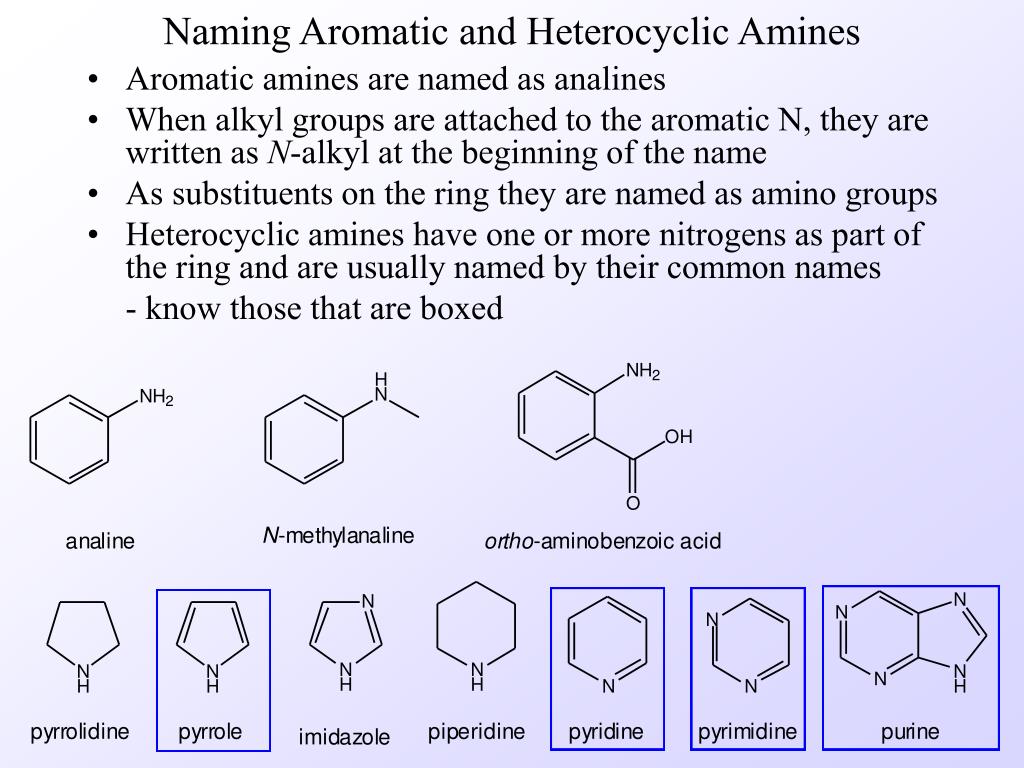
The proton on a carbon adjacent to the amine group is found from 1.5≢ ppm. The amine proton(s) show(s) as a broad peak (but not as broad as a carboxylic acid proton peak) from 0.5≣.0 ppm if the amine is aliphatic 3≥ ppm if the amine is aromatic. NH wag, primary and secondary amines, from 910-665.CN stretch (aliphatic amines) from 1250-1020.CN stretch (aromatic amines) from 1335-1250.NH bend, primary amines (sometimes secondary amines), 1650-1580.NH stretch, secondary amine, one band from 3350-3310.NH stretch, primary amine, two bands from 50.You can also look for C-N stretch bands, although these appear in regions that show bands for othe functional groups as well. If it is a primary amine (NH 2) there are two bands in this region if it is a secondary amine (NHR) there is one band if it is a tertiary amine (-NR 2) there are no bands in this region. These are weaker bands than the alcohol OH stretches which appear in the same region. Figure 1 illustrates the diversity of the reactions.Primary and secondary amines show NH stretches in the region 3300-3000. These cations can react with any anion present in solution to form a variety of compounds. Because aromatic diazonium salts are only stable at very low temperatures (zero degrees and below), warming these salts initiates decomposition into highly reactive cations. Tertiary amines react with nitrous acid to form N‐nitrosoammonium compounds.ĭiazonium salts of aromatic amines are very useful as intermediates to other compounds. Secondary aliphatic and aromatic amines form nitrosoamine with nitrous acid. Primary aromatic amines form stable diazonium salts at zero degrees. Therefore, reacting primary amines with nitrous acid leads to a mixture of alcohol, alkenes, and alkyl halides. Primary amines react with nitrous acid to yield a diazonium salt, which is highly unstable and degradates into a carbocation that is capable of reaction with any nucleophile in solution. Nitrous acid is unstable and must be prepared in the reaction solution by mixing sodium nitrite with acid. The oxidation of a tertiary amine leads to the formation of an amine oxide.Īrylamines tend to be easily oxidized, with oxidation occurring on the amine group as well as in the ring. The sulfonamide of a primary amine is soluble in an aqueous base because it still possesses an acidic hydrogen on the nitrogen, which can be lost to form a sodium salt.Īlthough you can oxidize all amines, only tertiary amines give easily isolated products. If the sulfonamide is insoluble in aqueous sodium hydroxide, it is a secondary amine. If the sulfonamide that forms dissolves in aqueous sodium hydroxide solution, it is a primary amine. If a product forms, the amine is either a primary or secondary amine, because tertiary amines do not form stable sulfonamides. In the Hinsberg test, an amine is reacted with benzene sulfonyl chloride. The Hinsberg test, which can distinguish primary, secondary, and tertiary amines, is based upon sulfonamide formation. A typical example is the reaction of benzene sulfonyl chloride with aniline. If you react secondary amines with aldehydes or ketones, enamines form.Īmines react with sulfonyl chlorides to produce sulfonamides. When reacted with acids, amines donate electrons to form ammonium salts.Īcid halides react with amines to form substituted amides.Īldehydes and ketones react with primary amines to give a reaction product (a carbinolamine) that dehydrates to yield aldimines and ketimines (Schiff bases). Nuclear Magnetic Resonance (NMR) Spectraĭue to the unshared electron pair, amines can act as both bases and nucleophiles.Introduction: Spectroscopy and Structure.

Nucleophilic Substitution Reactions: Mechanisms.



 0 kommentar(er)
0 kommentar(er)
